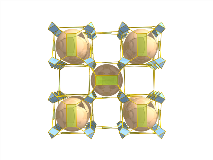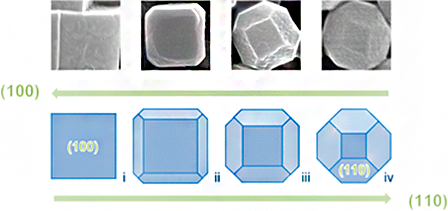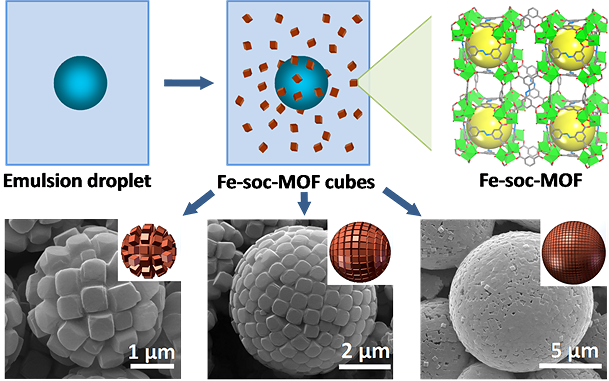



Due to the crucial requirement for practical applications, such as catalysis, porous membranes, biomedical imaging, biosensing, and drug delivery etc, scaling down the size of MOFs into nano- or micro-regime is becoming a new rapidly developing research area. Through solvothermal approaches, we have successfully obtained highly monodisperse nano or submicron-scaled MOFs and their superstructures (superlattice, colloidosomes etc.), whereby the size and morphology were systematically controlled by fine tuning the experimental conditions.

Our group carried out an investigation on shape-controlled growth of InIII- and GaIII-based square-octahedral metal-organic frameworks (soc-MOFs). In particular, controllable crystal morphological evolution from simple cubes to complex octadecahedra has been achieved, and resultant highly uniform crystal building blocks promise new research opportunities for preparation of self-assembled MOF materials and related applications.

Bottom-up fabrication of complex 3D hollow superstructures from nonspherical building blocks (BBs) poses a significant challenge for scientists in materials chemistry and physics. Scientists from the FMD3 group described for the first time a one-step emulsion-based technique that permits the assembly of metal–organic framework (MOF) faceted polyhedral BBs (i.e., cubes instead of spheres) into 3D hollow superstructures (or “colloidosomes”). The shell of each resultant hollow MOF colloidosome is constructed from a monolayer of cubic BBs, whose dimensions can be precisely controlled by varying the amount of emulsifier used in the synthesis.
Related
Publications